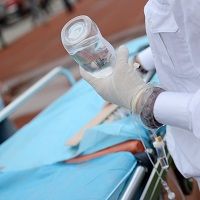Article
Psychiatric Comorbidities Common in Adolescent Trauma Patients
Author(s):
Study results suggest that symptoms consistent with post-traumatic stress disorder, depressive symptoms, physical peer violence, cyberbullying, and community violence exposure appear to be common and interrelated among adolescents presenting to the emergency department.

Study results suggest that symptoms consistent with post-traumatic stress disorder (PTSD), depressive symptoms, physical peer violence, cyberbullying, and community violence exposure appear to be common and interrelated among adolescents presenting to the emergency department (ED).
Published online ahead of print on December 18, 2015 in General Hospital Psychiatry, the study from Hasbro Children’s Hospital found that nearly one-half (46.5%) of adolescents seen in the ED for any reason reported peer violence and another approximately one-half (46.7%) also reported being the victims of cyberbullying. Nearly one-quarter (23.2%) of the 353 adolescents aged 13 to 17 years who participated in the study reported symptoms consistent with PTSD, whereas 13.9% had moderate or higher depressive symptoms, and 11.3% had suicidal thoughts within the previous year. About two-thirds (58/9%) of teens seen in the ED for any reason reported exposure to community violence.
“PTSD in adolescents has been associated with long-term functional impairment, including poor physical health, academic failure and increased need for medical services,” said lead author Megan Ranney, MD, MPH, emergency medicine attending physician at Hasbro Children’s Hospital, and assistant professor in the Department of Emergency Medicine at Rhode Island Hospital and The Alpert Medical School of Brown University. “But, despite the availability of effective treatment, PTSD is currently underdiagnosed, underreported, and undertreated, especially among children and adolescents.”
Ramney and colleagues found that PTSD symptoms were strongly correlated with various comorbid risk exposures, including being the victim of cyberbullying or physical peer violence, community violence exposure, and alcohol or drug use. However, few adolescents with PTSD in the study reported receiving any mental healthcare in the previous year.
“These results should serve as a reminder to parents, schools and physicians that these problems are prevalent in our community,” said Ranney. “This study also highlights that teens with a history of cyberbullying or peer violence are more likely to have PTSD, which is a very treatable disease if properly identified and addressed. The problem is that there has been a lack of knowledge about the prevalence and impact of PTSD in adolescent emergency patients, particularly among patients who are not presenting in the aftermath of an obviously traumatic event.”
According to Ramney, previous research describes the development of PTSD in adolescent emergency patients after an acute assault or motor vehicle crash. “But, this study highlights the need for improved efforts at more standardized mental health evaluation, possibly even screening for PTSD regardless of the reason for a teen's visit to the emergency department,” she said.




